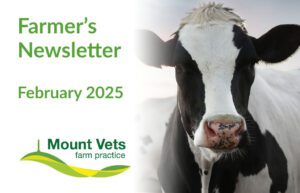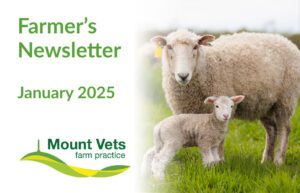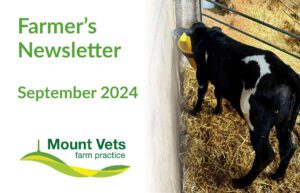November 2023
Here is the latest from our farm team at Mount Vets. If you would like any further advice or would like us to cover something in the next newsletter, please call us on 01823 662286 or contact us here.
We want to hear your feedback… Leave us a review!
We value your feedback and comments and would appreciate if you could take the time to leave us a review! Please follow the link to share your thoughts.
Pen & Strep / Pentomycin Update
Pen & strep is out of supply for a while. Fortunately, we have managed to source a replacement called Pentomycin. Please note that this product must be stored in the fridge (2-8c). Pentomycin contains the same antibiotics as Pen & Strep and the dose rate is the same (1ml per 25kg bwt for 3 days). However, the withdrawal periods are slightly different:
Pentomycin
Cattle: Meat 21d, milk 72h
Sheep: Meat 21d, milk – not to be used for milking ewes
Pen & Strep
Cattle: Meat 23d, milk 60h
Sheep: Meat 31d, milk – not to be used for milking ewes
If you have any queries etc, then please contact the practice.
Terminating Heifer Pregnancies
written by Pippa White
Whether its ahead of marketing heifers or now that the cattle are in for housing and the bull’s been pulled out, this time of year we are frequently asked to jab the heifers, especially at TB testing. Of course, having a tight breeding period of 9-12 months reduces the risk of teenage pregnancy, though may not entirely eliminate it and most people would still have the bulls in for longer. I frequently find myself reciting the same disclaimers ad nauseum, so I thought I’d shed a little more light on how this process works and what the limitations are.
Heifers typically reach puberty at approximately 50% of their adult bodyweight, so for the majority of breeds somewhere between 300-450kg. Onset of puberty has little to do with age and is mostly governed by liveweight and fat cover. However, this also varies hugely with genetics and nutrition and some heifers may begin cycling at a lighter weight than expected.
Approximately 3-5 days after ovulating, an ovarian follicle will turn into a small 2-2.5cm lump called a “corpus luteum”, which we refer to as a “CL”. This CL will sit on the ovary and produce progesterone, the hormone that maintains pregnancy.
At approximately 18 days after ovulation, if an embryo has not successfully signalled its presence to the heifer or cow (thereby establishing a pregnancy), the uterus will produce another hormone, prostaglandin, to cause the CL to regress away and disappear, allowing for the next follicle to ovulate. Alternatively, if she is in fact pregnant, this prostaglandin release is blocked, allowing the CL to stay and produce progesterone throughout the pregnancy.
When heifers accidentally get pregnant, we are fortunate to have synthetic prostaglandins (for example, Estrumate) at our disposal. These are effective at terminating the pregnancy from 7-10 days after mating, once the CL is big enough to respond to the prostaglandin and regress, thus terminating the pregnancy. For this reason, we always recommend waiting at least a week since the heifers have been separated from the bull (and bull calves), as there may be some pregnancies that are too recently conceived to respond!
A big caveat to bear in mind is that from approximately 3-4 months into the pregnancy, the placenta starts producing enough progesterone that eliminating the CL alone may not be enough to terminate the pregnancy. The solution, in this situation, is to also inject the heifers with a steroid, which mimics the hormone profile of a calving and essentially induces a premature calving. This can be done at any point in the middle and third trimesters, though obviously the further into the pregnancy we get, the bigger the calf is going to be and may necessitate a vet visit to get the foetus out anyway. For this reason, we always recommend that we scan the heifers first, try and age any visible pregnancies to gauge whether steroid is likely to be needed in addition (though bear in mind that some heifers will be too small for us to safely rectal). This has the additional advantage of you knowing which heifers were 28+ days in calf, so you can be extra vigilant for signs of abortion and to have them re-scanned at a later date to ensure it was successful.
Preparing for Lambing
written by Charlie Aldington
Lambing kicks off again soon for the early lambers, so I thought we’d run through a quick reminder on a few things to get the lambing sheds ready to go. Next month, we’ll cover late gestation ewe nutrition in further detail.
Stocking Density and Feed Face Availability
House ewes around 2 weeks before lambing, though potentially a bit earlier in truly foul weather. Group ewes according to scanning results to allow for more targeted feeding. Pre-lambing pens should allow for 1.2-1.4m2 per ewe of lying area, ensuring good hygiene standards and frequent strawing up. Allow at least 45cm per ewe of trough space for concentrate feeding and 12-15cm per ewe of feed face access to ad-lib forage. It is especially important to have adequate trough space for concentrate feeding. Insufficient space can easily lead to intense competition when feeding out. The stronger ewes may muscle their way in and get the lion’s share, potentially leading to subacute ruminal acidosis and digestion issues, while the weaker or smaller ewes may be left with little – increasing the risk of twin lamb disease.
You need at least one lambing pen per eight ewes, each with a minimum area of 1m x 2m. These pens should be mucked out between ewes, disinfecting the floor with hydrated lime before bedding back up generously with clean straw. Ensure clean, fresh feed and water is provided twice daily. Allow a minimum of 2-6 hours bonding time in the pens before turning out into small post-lambing groups for ease of mothering. Turn out when the lambs are fit, full and dry and the weather is reasonable. Turn out into small, sheltered paddocks close to the sheds for easy observation.
A good rule of thumb is to have ready one adopter pen and one isolation pen per 50 ewes.
Colostrum Supply
Of course, the ewe’s own colostrum is best but if she doesn’t have enough or the worst has happened, a good alternative must be at hand for emergencies. Most “colostrum supplement” powder products are effectively little better than milk powders with a bit of yellow colouring in and contain little or no antibodies. We have a very effective freeze-dried calf colostrum product (Calf’s Choice Total 100) made of real colostrum, which are easily made up with warm water into a high-quality colostrum replacer. Some of you may be familiar with this product already for use in calves but we now have a lamb/kid-specific dosing table available on request to make this easier. We would recommend a bag be emptied into clean/dry resealable containers or sandwich bags so as not to leave the bag open and getting damp. One bag will do approximately 6-9 4kg lambs.
Alternatively, fresh ewe colostrum from a fit, recently lambed ewe (ideally with a well fed single) is a good option. Frozen cow colostrum can also be helpful to have on hand, though it must be from cows with a history of at least two negative Johne’s tests and beware that some cow colostrum contains antibodies that destroy lamb red blood cells – it’s a small risk but one to bear in mind. Also bear in mind that cow colostrum is more dilute than ewe colostrum, so feed an additional 10% over the general rule of thumb: Lambs born indoors need approximately 50ml per kg of birthweight within the first 2 hours of life and a total of 200ml/kg in the first 24 hours of life.
Foot Trimming Course
We ran another very successful Beginners Guide to Cattle Foot Trimming Course with Piers on 16th October. Thank you and well done to all those that attended.
The day aims to teach the Dutch 5 step technique, which is used all round the world. This course teaches the rudimentary techniques as well as allows you to practice on several feet on the day. You also learn more about the overall control of lameness within the herd.
Thank you to the Laura Persey Trust for their kind donations to attendees, for promoting the courses and giving Young Farmers opportunities like these. If you would like more information on the funding that the Laura Persey Trust provides towards our courses, please contact us.
If you are interested in future courses, please register your interest:
Call us on 01823 662286
Upcoming courses
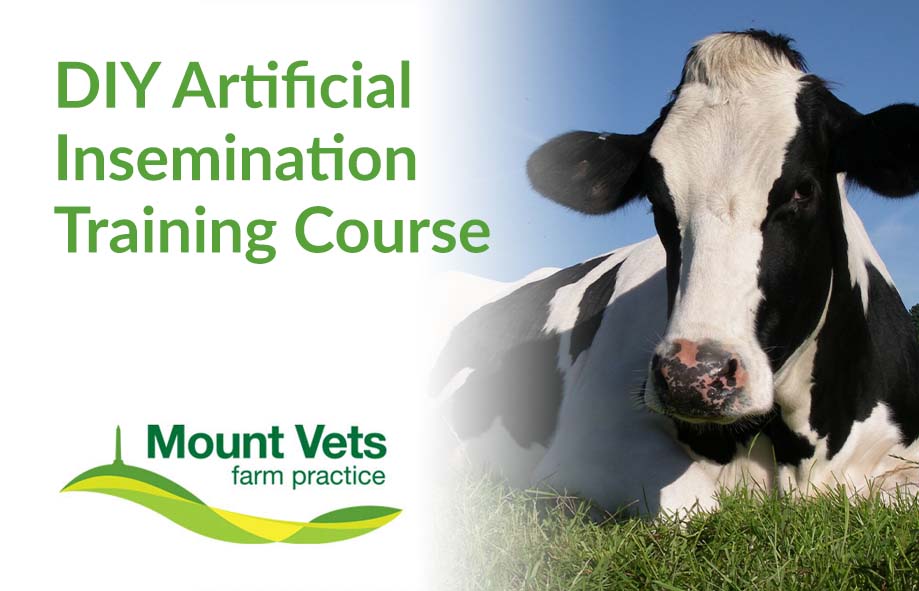
DIY Artificial Insemination
23rd, 24th, 26th & 27th October 2023
Our next 4-day DIY AI course will run on 23rd, 24th, 26th & 27th October 2023.
This DEFRA approved course is aimed at anyone who has no previous experience in the artificial insemination of cows. The 4-day course is run by our experienced farm vet Rob Mangham and is full of theory and practical sessions to make sure you leave feeling confident and safe in all aspects of AI.
The cost of the course is £500 + VAT, with a £50+VAT deposit to secure your space. (Deposit will be taken off final amount)
Please ring the practice to book your place on any of our courses on 01823 662286 or email farm@mountvets.com
Meet the Team!
We have an experienced & friendly team here at Mount Vets. You might already recognise a few faces but over the next few months we will reintroduce you to some of our excellent team. To read more and see more of the faces of Mount Vets visit our team page, and be sure to follow us on Instagram and Facebook.
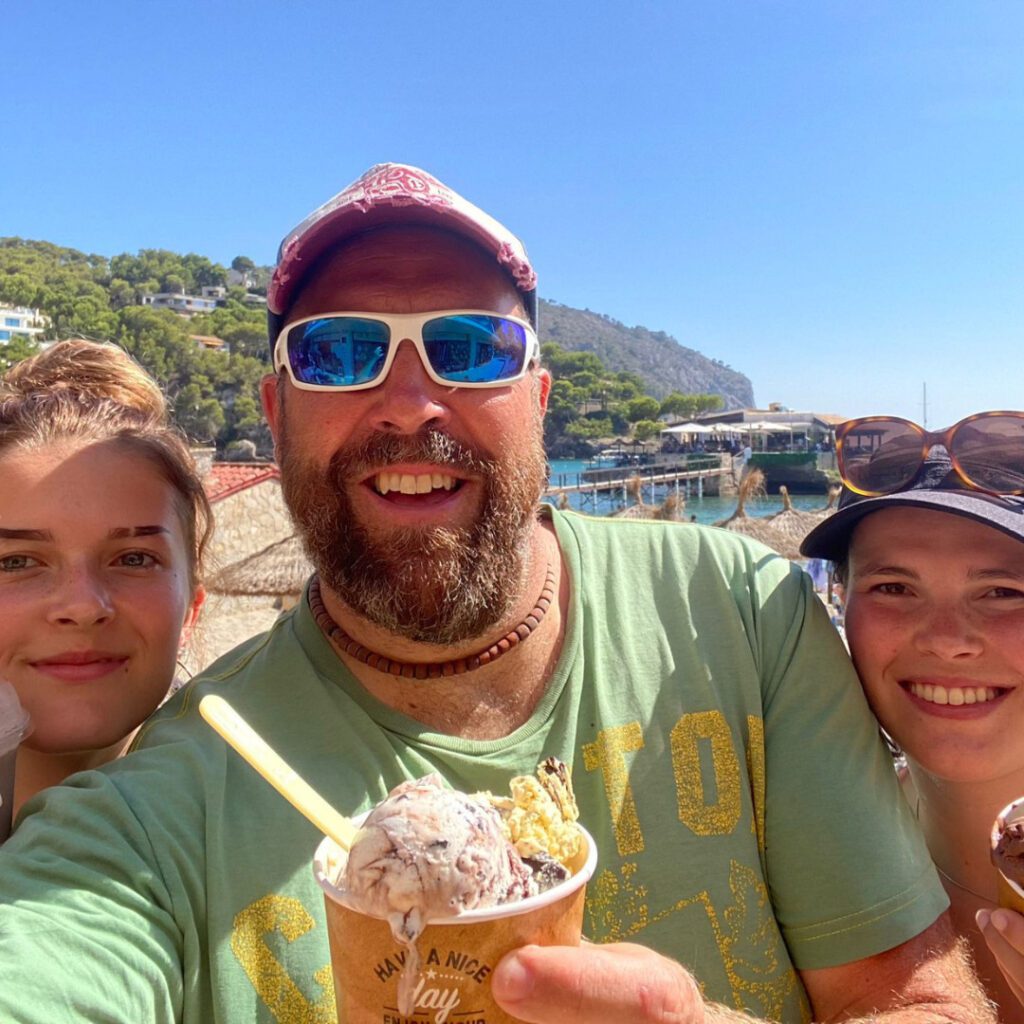
Piers Pepperell
Director
Many of you will already know our Mount Vets Director Piers; but did you know he has appeared on tv show Blind Date with Cilla Black?
Piers loves to spend a free day with his two daughters and three dogs, surfing on the North Devon Coast.
His favourite vet call out was when he was called into the waiting room and unknown to him at the time, but he then met his wife to be. She had brought in her eight baby bunny rabbits, which led on naturally to a 10-minute chat about pig wormers and her asking Piers out on a date.
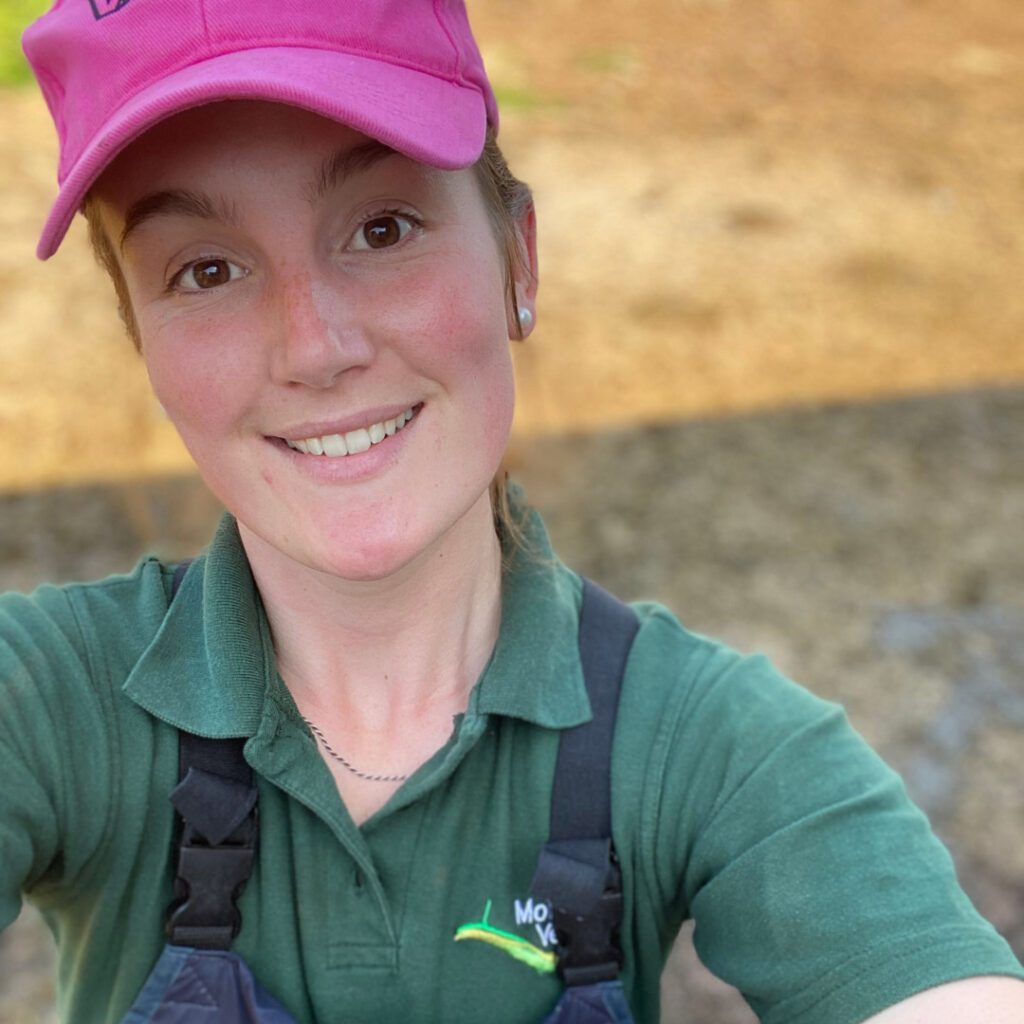
Pip White
Vet
Pip is one of our large animal vets. If you’ve met her, you will probably know how much she loves her cows. So much so, that she loves to spend her free time at home with her cows! That, or in the showring showing them. 🐮
Pip graduated as top student in her year from the University of Surrey.
Her favourite song is Mr Brightside by the Killers.
Have a question about any of the topics covered in this newsletter?
If you need any assistance with the topics covered in this newsletter, please do not hesitate to get in touch with our experienced farm vets who will be able to help. Call 01823 662286, or contact us here.
